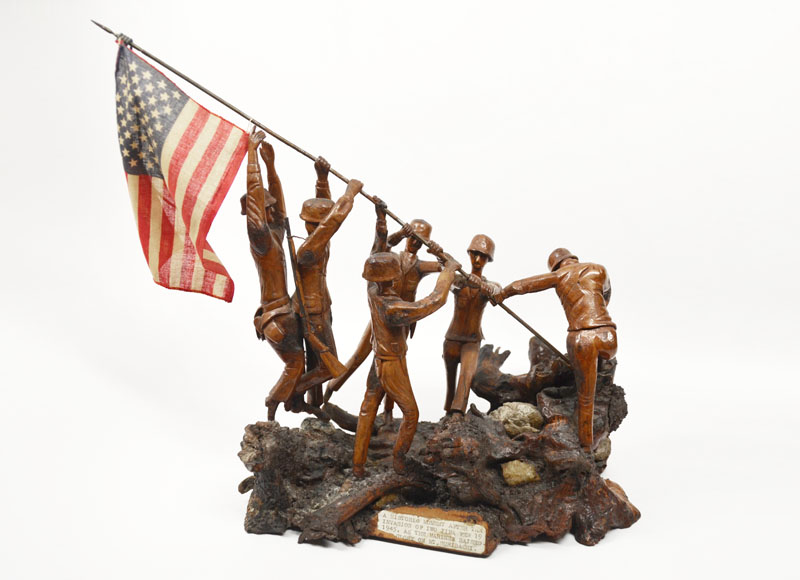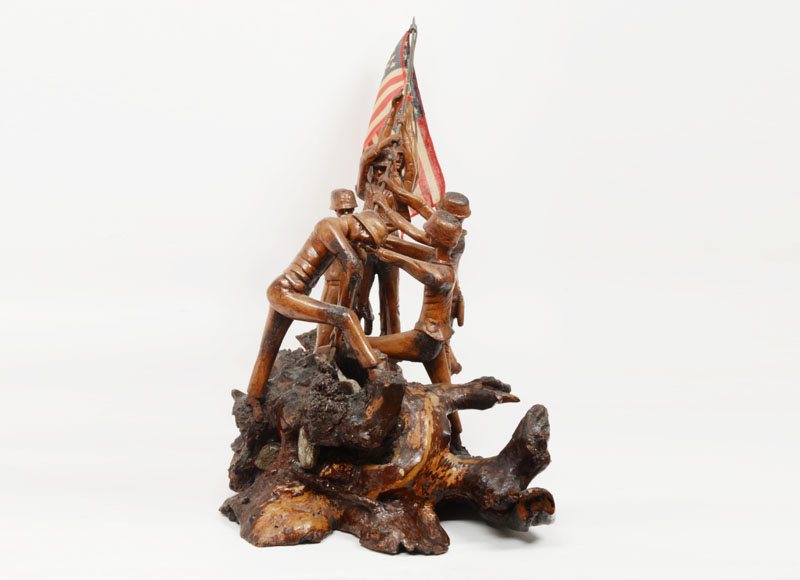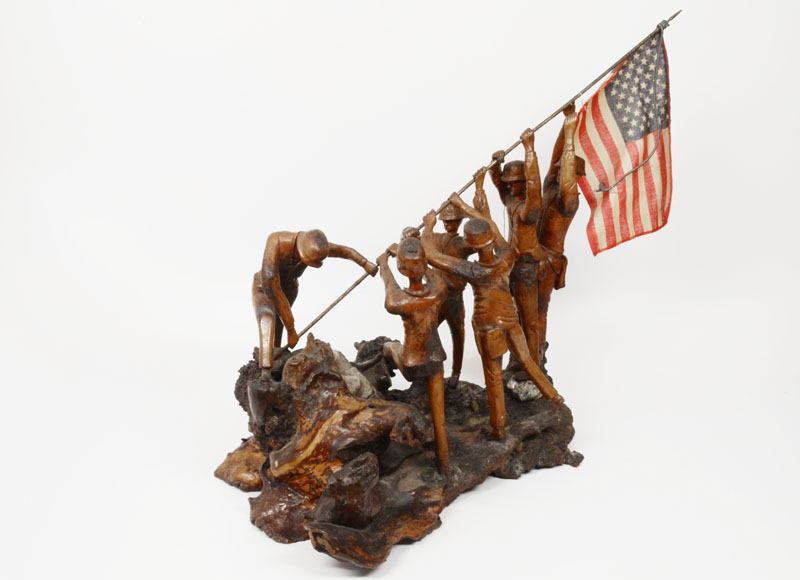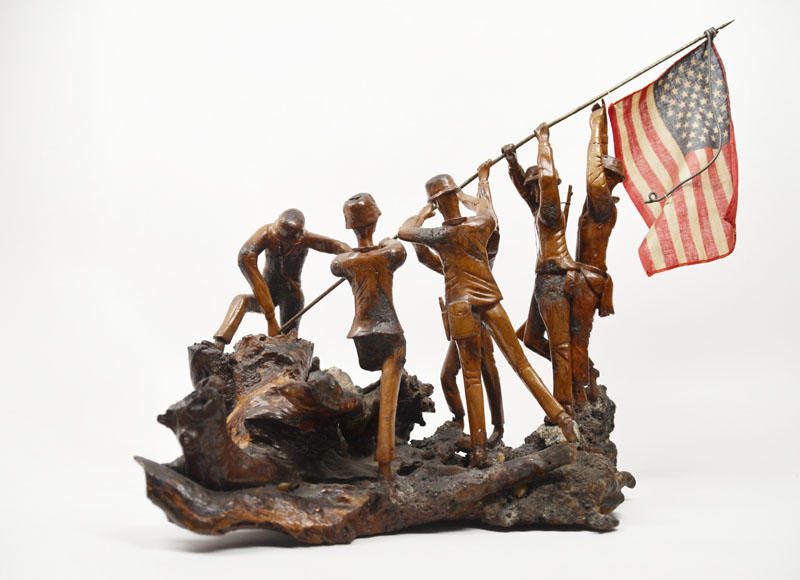- HOME
- INVENTORY
- GALLERY
- BOOKS
- CATALOGS
- ABOUT & MORE
- CONTACT
Contact Us
Raising the Flag on Iwo Jima
Circa: 1945
Size: 15" (l)" x 9" (w)" x 13" (h)"
This complex folk art carving depicts the historic event captured by the Rosenthal photograph (though the men do not exactly follow the composition of the photograph). Six men are individually carved (well four, the last two are conjoined at the pelvis) with great detail to the uniforms and a sense of the action. The carver had a fine understanding of proportion and working in the round - it works from every angle - the whole has tremendous energy. A most remarkable folk art sculpture of an important event in American history.
The Raising of the Flag on Iwo Jima, February 23, 1945, as photographed by Joe Rosenthal captured the spirit America needed during that emotional time. It quickly became a sensation and symbolized the heroism of our troops. It was the only photograph to win a Pulitzer Prize for Photography in the same year it was taken, and the first to be issued as a US stamp with living people on it.
The old label to the front reads. "A Historic moment after the invasion of Iwo Jima Feb 19 1945, as the Marines raised (Old) Glory on Mt. Suribachi." A 1945 3¢ stamp is pasted on the underside.
According to oral tradition, the root structure is from Iwo Jima and the whole was carved by a marine while maintaining the island's capture. At this point it is impossible to substantiate this claim, however the root structure appears to be a rhododendron root, the type used for traditional Japanese scholar articles.
Condition: Excellent. A rock was replaced under the foot of the soldier on the end. The flag is an old replacement.
Price: $6,800.00

ALL ITEMS GUARANTEED AS REPRESENTED
STEVEN S. POWERS • 53 STANTON ST, NY, NY 10002 • 917-518-0809 • email: steve@stevenspowers.com • © all rights reserved






